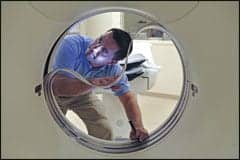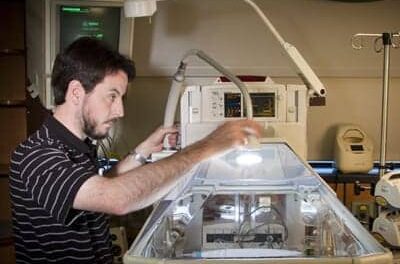 The biomed profession is dynamic, evolving—always changing and advancing. That is why many of us are in the profession today. We love the constant challenge and diversity of what we do. We have evolved from a safety and defibrillator analyzer being our predominant tester to data jack and network analyzers. As our profession continues to evolve, so too must our education to keep our skills current and relevant.
The biomed profession is dynamic, evolving—always changing and advancing. That is why many of us are in the profession today. We love the constant challenge and diversity of what we do. We have evolved from a safety and defibrillator analyzer being our predominant tester to data jack and network analyzers. As our profession continues to evolve, so too must our education to keep our skills current and relevant.
When I started in this field 30 years ago, the first things we had to master were vacuum tubes and transistors. We had to identify which tube element or which transistor leg had failed. While these components are no longer current, the skills used to troubleshoot down to component level formed the basis of our analytical and troubleshooting skills. We have evolved through the integrated circuit to microprocessor-based devices, from racks of circuit boards to small, sealed, multilayered boards that form the basis of the technology we support.
How we add value to our organization has changed. We are very limited as to what we can troubleshoot down to component level anymore. We have to adapt our highly developed troubleshooting skills to our current work environment while increasing our value to our organization. We work on a wide variety of different devices from a whole host of manufacturers. As an example, at Oregon Health & Science University, we have 18,671 active devices and 4,469 different models from 1,169 different manufacturers. Our ability to be successful in this type of environment sets us apart from our IT colleagues.
Educational Opportunities
What is the current state of biomed education in the United States? John Noblitt, program director for biomedical equipment technology at Caldwell Community College and Technical Institute in Hudson, NC, helped accumulate the following statistics.
 In 1997, there were 64 biomed programs in 29 states. In 2004, there were only 22 programs left in 16 states. It is not clear as to why this occurred. I would speculate that it is related to the growth of the IT industry. Many more jobs and higher pay in IT would have been the likely forces that were the root cause of this change. All is not lost, though. I am aware of one program in California that is starting up, and I just received a call from Portland Community College in Portland, Ore, indicating that it is starting a program this fall. When we post biomed jobs, usually more than half of the applicants are IT people with no biomed background.
In 1997, there were 64 biomed programs in 29 states. In 2004, there were only 22 programs left in 16 states. It is not clear as to why this occurred. I would speculate that it is related to the growth of the IT industry. Many more jobs and higher pay in IT would have been the likely forces that were the root cause of this change. All is not lost, though. I am aware of one program in California that is starting up, and I just received a call from Portland Community College in Portland, Ore, indicating that it is starting a program this fall. When we post biomed jobs, usually more than half of the applicants are IT people with no biomed background.
I just hired two graduates from a unique program at Spokane Community College in Spokane, Wash. Its curriculum is designed so that a student can take a 3-year program and graduate with an associate’s degree in both biomedical equipment technology and IT. If you are hiring recent graduates, it doesn’t get any better than this. Chris Coehlo, biomedical program director at Spokane Community College, has done an outstanding job preparing these students for the current hospital environment.
Preparing for the Future
If you are already a biomed, what education should you be considering to help prepare you for the future? I sat down with John Kenagy, chief information officer, Oregon Health & Science University, and developed a list of subjects and topics that would help identify some potential skill areas to concentrate on:
• networking, both wired and wireless;
• systems administration;
• systems management;
• networking standards;
• communication protocols;
• network administration;
• wireless systems;
• HL7 and XML interface models; and
• IT security and HIPAA.
While this is not an all-encompassing list, it does give you a good idea of areas that you could focus on. Many organizations provide tuition assistance for qualified coursework at community colleges and universities. Oftentimes, this money is more easily available than money for manufacturer service schools. As we have discussed in previous months’ columns, the ability to be skilled in these IT-related areas will be a huge benefit for your career and to your organization.
How should biomed directors and managers prepare themselves for the future? I can tell you from firsthand experience that if you do not keep up your skills—particularly involving IT—your staff will blow right by you as they gain experience and confidence. Here are a few ideas to help you better prepare for what’s ahead:
• management in science and technology;
• computer sciences and engineering;
• medical informatics;
• health care administration; and
• business administration and management.
If your organization has not yet developed and implemented an electronic medical record, any of the education noted above—especially medical informatics—will help prepare you for that venture. Being a leader as your organization moves forward is much more rewarding than being a follower behind other departments.
Hopefully, this series of articles has given you some things to consider and ideas to think about in your facilities as you prepare for the future and your relationship with IT.
Dennis Minsent, MSBE, CCE, CBET, is the director of clinical technology services at Oregon Health & Science University, Portland, Ore.




